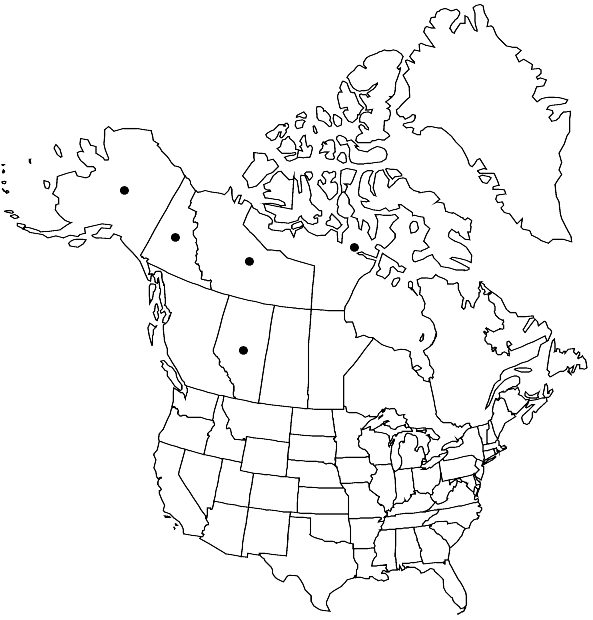Didymodon johansenii
Canad. Field-Naturalist 83: 157. 1969,.
Plants green to reddish green. Stems to 1.5 cm, central strand present. Stem-leaves erect-appressed when dry, spreading and not keeled when moist, monomorphic, oblong-lanceolate, adaxially weakly concave across leaf, 0.7–1.1 mm (excluding the deciduous tip) to 2.5 mm whole, base scarcely differentiated in shape, margins recurved at mid leaf, entire, apex thickened, long-cylindric to clavate, seldom a long, filiform excurrency, usually soon deciduous, constricted in places, absent in mature leaves; costa excurrent, excurrency absent in mature leaves, not much widened or tapering at mid leaf but swollen in excurrency, pad of cells absent, adaxial costal cells elongate at mid leaf but quadrate near apex, 2–4 cells wide at mid leaf, guide cells in 1 layer; basal laminal cells differentiated medially, walls thin; distal laminal cells 13–15 µm wide, 1: 1, papillae absent, lumens often angular, walls thin to irregularly thickened, weakly convex on both sides, 1-stratose except in deciduous apex. Specialized asexual reproduction by the deciduous leaf apex. Seta 0.35–0.50 cm. Capsule 0.75–1.00 mm; peristome teeth 16, linear, cleft to near base, straight to weakly twisted, ca. 200 µm. Spores 15–18 µm. Distal laminal KOH reaction red.
Phenology: Capsules mature summer (Jul–Aug).
Habitat: Limestone outcrops and cliffs, boulder crevices, slopes, tundra, alluvial plain forest
Elevation: moderate to high elevations (1400-1600 m)
Distribution

Alta., N.W.T., Nunavut, Yukon, Alaska, Europe, Asia (China)
Discussion
Distinctive characters of Didymodon johansenii are the striate peristome teeth, deciduous, clavate leaf apex and large, trigonous laminal cells. Most collections of it lack the propaguliform apex in all but the most immature leaves, and the leaves are oblong-lanceolate. Some specimens (e.g., Northwest Territories: Scotter 22404, MICH), however, approach D. ridigulus var. icmadophilus in the green color, ovate leaf base, and apparently nondeciduous leaf apices. These collections can be rightly placed by the presence of claviform apices in at least some leaves (especially those near an inflorescence) and the large distal laminal cells, which often have trigones. Didymodon nigrescens has fragile, clavate tips to its perichaetial leaves, but the crenulate distal leaf margins and very thin costa will distinguish it.
Selected References
None.
Lower Taxa
"um" is not declared as a valid unit of measurement for this property."um" is not declared as a valid unit of measurement for this property.